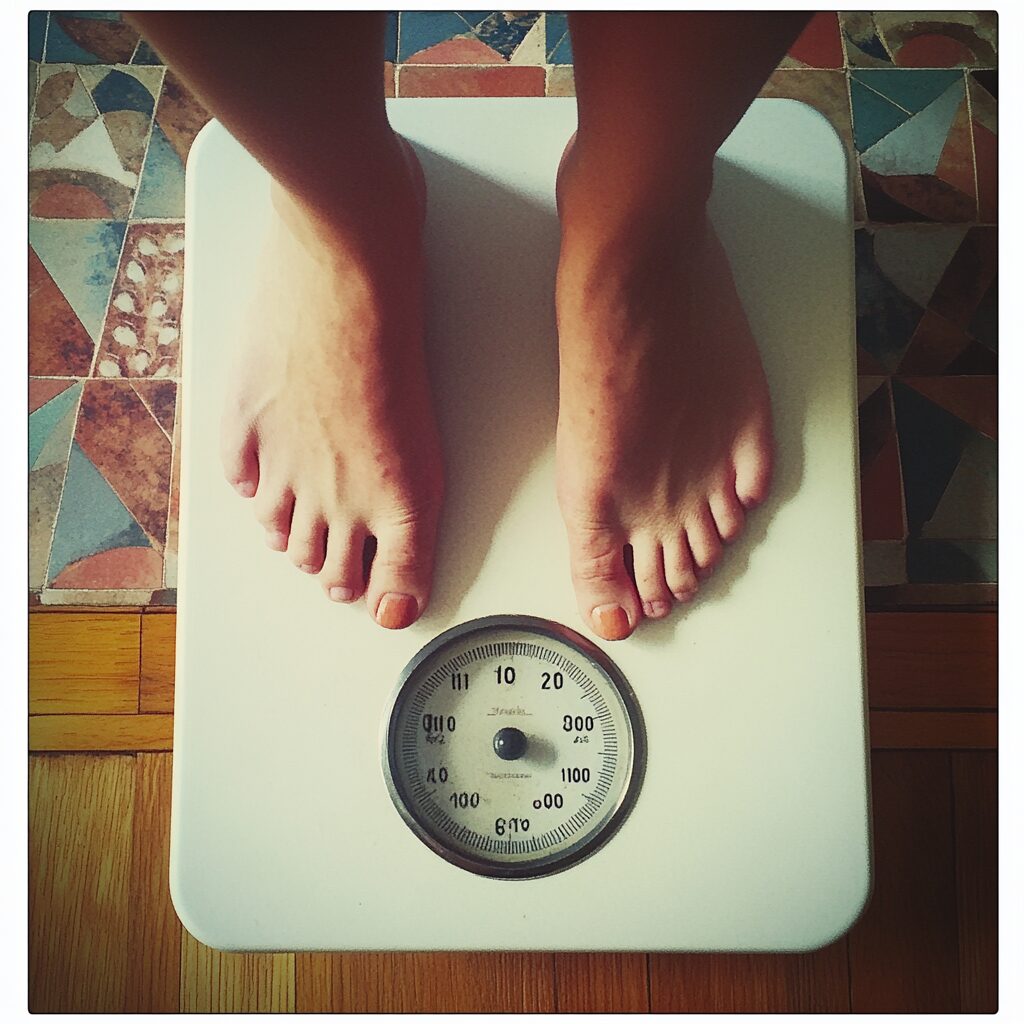Weighing yourself is often considered a common step in the journey of losing weight or losing inches, but it’s not always essential. There are plenty of alternative methods to track weight loss progress that don’t rely on numbers or risk becoming a triggering experience. So, what should you do if you’re noticing a loss in inches but not in weight? And how valuable is the scale when it comes to understanding your progress? Exploring the answers to these questions might just change the way you view that number on your scale entirely.
Know the Truth About Weight
When discussing weight loss, many people aspire to drop a few clothing sizes, especially around the hips, thighs, belly, and arms. However, achieving this doesn’t always translate into losing actual pounds.
In reality, you can build muscle and reduce body fat simultaneously without noticing a significant change in your weight. This occurs when you lose fat while gaining muscle. Although your weight might stay constant, losing inches is a clear indication of progress and a step in the right direction. Understanding the distinction between weight loss and fat loss can profoundly influence how you evaluate your achievements.
A conventional scale measures your overall weight, but it doesn’t differentiate between muscle, fat, water, bones, or organ mass. For instance, a bodybuilder’s weight could be significantly high due to increased muscle mass, but that doesn’t make them overweight. Knowing your body composition is key if you want to achieve meaningful results. Unfortunately, a standard scale doesn’t provide this information.
Another reason why scale weight can be misleading is its frequent fluctuations. Your weight can vary throughout the day—sometimes by as much as 10 pounds—due to factors like what and when you eat or drink, bathroom habits, or water retention.
While many people now opt to ditch their scales in favor of tracking progress through clothing fit or overall well-being, the scale can still be a useful tool for occasional check-ins. In fact, a 2016 review revealed that regular weigh-ins helped individuals who had lost weight to maintain their progress over time.
Focus on Fat Loss, Not Weight
A fantastic point to bring attention to! Many people get caught up in the number on the scale, but weight alone doesn’t tell the full story. Shifting the focus to fat loss rather than just weight can lead to healthier and more sustainable those just beginning a fat loss journey, relying on the scale might not be the most effective way to track progress. If the scale isn’t helping you stay motivated or aligned with your goals, it could be time to explore alternative methods of monitoring success.
Prioritizing fat loss over overall weight is key if that’s your objective. Reducing body fat while building muscle transforms your body composition in meaningful ways. On the other hand, weight loss alone may simply reflect fluctuations in water weight or even a loss of muscle mass. These changes could be influenced by daily routines, hormonal shifts, or hydration levels, making it difficult to gauge true results from the scale alone.
How the Scale is misleading you
The scale can often be a tricky and unreliable indicator. Here’s why:
- It measures everything. The number you see includes muscle, fat, bones, organs, food, and water, making it a misleading measure of actual progress or health.
- It doesn’t capture body changes. When you’re doing a mix of cardio and strength training, you might build lean muscle while losing fat. This transformation in body composition might not show up as a change in the scale, even though you’re improving.
- It doesn’t reflect your overall health. Scales can’t differentiate between fat and muscle, meaning someone with low weight could have unhealthy fat levels, while someone heavier might be very fit and muscular.
- It might not motivate positively. Focusing solely on weight can obscure the real benefits of a healthier lifestyle, like better cardiovascular endurance, increased energy, and overall well-being.
Measure Success in a New Way

Pay attention to how your clothes feel. If your goal is weight loss and your clothes start fitting more loosely, it’s a strong sign of progress. You might also observe improved muscle tone and notice that your breathing becomes easier during exercise.
Use Your Measurements
Tracking your measurements is an excellent way to gauge success beyond the scale. Regularly measuring areas such as your waist, hips, arms, and thighs can provide tangible proof of changes in your body composition. As you progress, you might notice reductions in size, improved muscle definition, or even more symmetry. This approach can be both motivating and a clear indicator of your hard work paying off!
Get a Different Scale
f you’re looking for more accurate ways to track your progress, investing in a different type of scale could be a smart move. Body composition scales, for example, go beyond weight measurement—they provide insights into metrics like body fat percentage, muscle mass, water retention, and more. These scales give you a more detailed view of changes in your body, helping you focus on fat loss and overall health rather than just the number on the scale.
Online Calculator
Body fat calculators can provide approximate estimates of your body fat percentage, offering a helpful starting point in tracking your progress. While these tools may not deliver precise measurements, their true value lies in their consistency. By using the same calculator repeatedly over time, you can monitor the overall trends in your body fat percentage. If the estimate shows a downward trend, it’s a strong indication that your efforts are leading to positive changes in your body composition.
This gradual monitoring can help you stay motivated, as you’re able to visualize your progress over weeks or months. Remember, the key is consistency—using the same tool under similar conditions (e.g., time of day, hydration level) can yield more reliable trend data. I like to personally weigh myself when I first get up in the morning, before I have hydrated. Though the numbers may not be exact, the trends are what truly matter when assessing your progress toward fat loss and improved health.
Set Performance Goals
Setting performance goals is an excellent way to stay motivated and measure progress effectively. Rather than focusing solely on outcomes like weight or fat loss, performance goals center on achievements that reflect your growing strength, endurance, or overall fitness. Here are some tips and examples to get you started:
- Make Them Specific: Instead of saying “I want to be stronger,” aim for something measurable, like “I want to increase my deadlift weight by 20 pounds in three months.”
- Focus on Skill Development: Goals like mastering a pull-up, running a mile without stopping, or holding a plank for two minutes are great performance milestones.
- Track Progress: Keep a log of your achievements to monitor improvement over time. You’ll be surprised at how satisfying it is to see tangible growth.
- Celebrate Milestones: Acknowledge small wins along the way—it can be as simple as hitting a new personal best during your workouts.
Performance-based goals not only help you stay focused, but also shift your perspective to what your body can accomplish rather than how it looks.

Consider taking a break from weighing yourself I will sometimes weigh myself once a month instead of once a week like I generally do this and put the scale away It will open your eyes to other possibilities to monitor fat loss or progress with your wellness practices. Remember, Your weight isn’t a measure of your success. Put away the scale and focus on other more important factors that may come along with a balanced diet and exercise program.
